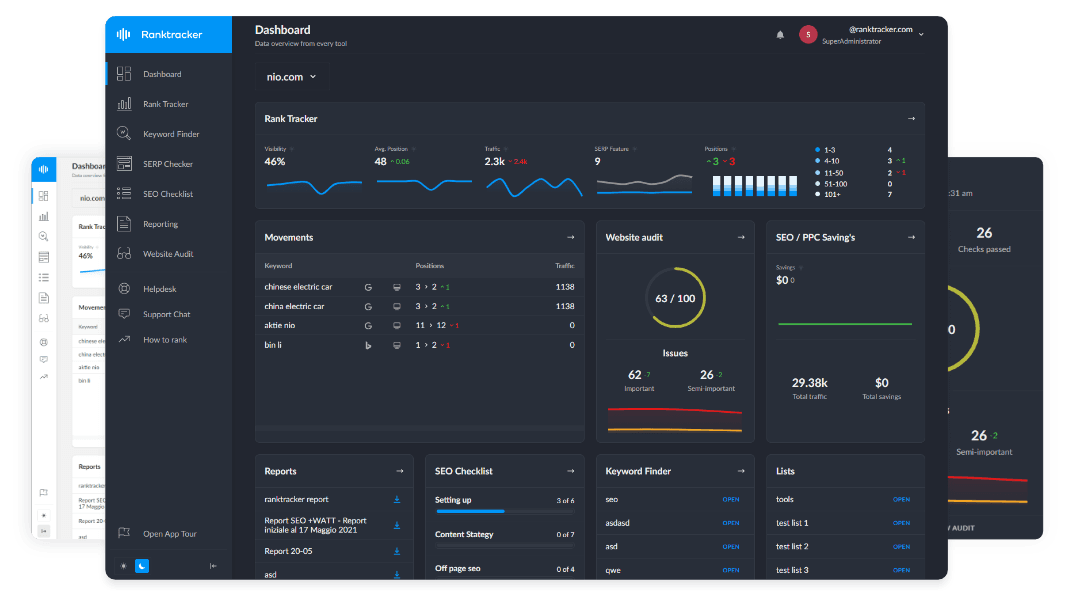Intro
Technology is advancing at an unprecedented pace. Businesses are finding it challenging to adapt to evolving customer demands, increasing competition, and outdated systems. Many leaders feel the urgency to identify smarter solutions or face being left behind.
Digital change is no longer just a concept—it's essential. Reports indicate that over 70% of organizations have a digital strategy in progress or are developing one. This blog will examine how contemporary IT advancements like AI, cloud computing, and IoT can make operations easier for businesses like yours. you're ready to discover how these tools enhance efficiency and foster growth, stay tuned!
Core Drivers of Digital Transformation
Businesses adapt or risk becoming irrelevant. The need for smarter, faster processes drives major decisions every day.
Changing customer expectations
People now demand faster, more customized services from businesses. They compare your company to tech giants like Amazon or Netflix, expecting the same speed and simplicity. If you fail to adapt, they take their business elsewhere.
"Customer loyalty isn't earned through products; it's built on experiences."
Shifting behaviors also push businesses toward decisions based on data. Buyers want options suited to their preferences in real time. This requires quick adjustments and ongoing updates across digital platforms.
Demand for operational efficiency
Businesses crave faster processes and fewer errors. Technology evolution drives firms to simplify workflows and reduce waste. Data-driven decisions tighten operations, cutting unnecessary steps that eat time or money.
Automation tools replace repetitive tasks, freeing teams for critical work.
Improving business operations enhances value delivery across sectors. IT modernization makes systems smarter and more adaptable over time. By incorporating digital tools into daily activities, companies improve process efficiency while maintaining quality output.
Competitive pressures
Competitors are racing to adopt advancements in technology. Faster progress in IT updates often sets one company apart from another. Tech experimentation drives fresh business models that align with data-driven processes, pushing others to adapt or risk falling behind.
The All-in-One Platform for Effective SEO
Behind every successful business is a strong SEO campaign. But with countless optimization tools and techniques out there to choose from, it can be hard to know where to start. Well, fear no more, cause I've got just the thing to help. Presenting the Ranktracker all-in-one platform for effective SEO
We have finally opened registration to Ranktracker absolutely free!
Create a free accountOr Sign in using your credentials
Digital changes force businesses to pivot quickly. Organizational restructuring becomes necessary to match the pace of rapid transformation. Firms embracing technological progress see improved process efficiency and customer-centered strategies, leaving laggards struggling for relevance.
Key IT Innovations Accelerating Digital Transformation
Technology is reshaping the way businesses operate. Fresh advancements are driving smarter processes and faster decisions.
Artificial Intelligence (AI) and Machine Learning
AI and Machine Learning reshape business operations through data-driven processes. They identify patterns, predict outcomes, and automate repetitive tasks. For instance, retail companies use AI to recommend products based on past purchases.
Manufacturers incorporate machine learning to reduce defects by analyzing production trends. These tools save time and also improve decision-making accuracy.
“AI solves problems we didn’t know we had.”
Chatbots powered by AI offer round-the-clock customer support, improving user satisfaction without increasing staff costs. Financial institutions rely on algorithms to detect fraud instantly across millions of transactions daily.
As businesses adapt systems for continuous tech updates, integrating AI becomes crucial for staying ahead of competitors' strategies while transitioning efficiently into Cloud Computing advancements. For example, retail companies use AI to recommend products based on past purchases. To explore innovative solutions in digital transformation, you can visit GSD's website.
Cloud Computing and Scalability
Cloud computing allows businesses to access IT resources without expensive hardware investments. According to Gartner, cloud computing enables scalable, on-demand access to computing resources and services, which can significantly increase agility and reduce operational costs. Companies adjust their operations up or down based on demand, saving costs and avoiding waste.
For example, a retail business can handle high traffic during holiday sales without overloading servers. This flexibility keeps operations smooth while meeting customer needs.
The All-in-One Platform for Effective SEO
Behind every successful business is a strong SEO campaign. But with countless optimization tools and techniques out there to choose from, it can be hard to know where to start. Well, fear no more, cause I've got just the thing to help. Presenting the Ranktracker all-in-one platform for effective SEO
We have finally opened registration to Ranktracker absolutely free!
Create a free accountOr Sign in using your credentials
This adaptability supports growth by modifying infrastructure as your company expands. Startups benefit from paying only for the resources they use instead of upfront expenses. Established companies reduce downtime by hosting applications or data in cloud environments with automatic load balancing.
This approach helps maintain process efficiency and supports digital advancements effectively across industries.
Internet of Things (IoT) Integration
Businesses now demand immediate connectivity between devices, systems, and operations. The Internet of Things (IoT) allows interconnected devices to exchange data and automate tasks. Smart sensors track equipment performance, preventing costly downtime through predictive maintenance.
Retailers monitor inventory instantly with IoT-enabled gadgets like RFID tags. Manufacturers improve production lines by connecting machinery to centralized systems. By integrating accurate data into decision-making processes, businesses enhance efficiency and minimize inefficiencies across daily operations.
Automation and Robotics
Automation and robotics are changing business operations rapidly. Robots now perform repetitive tasks faster than humans, cutting costs while reducing errors. Automated systems simplify workflows, allowing employees to focus on creative or planning roles instead of routine responsibilities.
Factories adopt robotic arms for assembly lines, enhancing efficiency in production processes. Warehouses implement automated sorting systems to speed up order fulfillment. These technologies not only improve operational efficiency but also address growing demands for precision and speed in modern industries.
Overcoming Challenges in Digital Transformation
Adopting new technologies can feel like navigating a maze without a map. Companies must address unforeseen challenges to maintain consistent progress and prevent obstacles.
Addressing legacy systems
Integrating legacy systems with modern digital solutions can help extend their lifespan and prepare for future upgrades. Learn more about Tech Keys and how they assist businesses in bridging old systems with new technologies.
This disconnect prevents businesses from achieving better operational efficiency and meeting current market demands. Instead of immediate replacement, companies can integrate legacy systems with digital solutions to extend their lifespan while preparing for gradual upgrades.
Outdated platforms also bring higher maintenance costs and security risks due to limited updates. Transitioning toward modern technology requires a phased approach that prioritizes critical areas first.
Businesses should map out system dependencies, identify gaps, and adopt adaptable technologies compatible with existing setups. This not only reduces downtime but also ensures smoother adoption of new processes across teams.
Ensuring data security and compliance
Outdated systems often increase vulnerability. Updating IT infrastructure enhances the protection of sensitive information and ensures compliance with strict regulations.
Cyber threats grow daily, focusing on weak points in business operations. Secure data through encryption, monitor access carefully, and keep software updated regularly to prevent breaches. Maintain compliance by adjusting processes to meet evolving legal standards like GDPR or HIPAA.
Managing resistance to change
People fear change, especially in business operations. Introducing IT modernization can feel like pulling the rug out from under employees' feet. Clear communication eases this anxiety. Explain why technology improvements benefit both the company and its roles.
Offer training sessions for new systems or tools early in the transition. Show workers how technological advancements simplify tasks and improve process efficiency. Small wins build trust over time, opening minds to flexible transformation strategies.
Next: Future Trends in Digital Transformation
Future Trends in Digital Transformation
Businesses will take advantage of technological advancements to reconsider decision-making processes. Faster networks and more intelligent tools will redefine how companies function on a daily basis.
Predictive analytics and decision-making
Predictive analytics helps businesses make decisions based on data, not just gut feelings. As IBM explains, predictive analytics uses statistical techniques, machine learning, and data mining to forecast outcomes and guide business strategy. It examines trends from past and present information to forecast future outcomes. Companies rely on it to understand customer preferences, estimate sales growth, or detect market risks early.
This method minimizes guesswork and enhances the precision of business strategies.
The All-in-One Platform for Effective SEO
Behind every successful business is a strong SEO campaign. But with countless optimization tools and techniques out there to choose from, it can be hard to know where to start. Well, fear no more, cause I've got just the thing to help. Presenting the Ranktracker all-in-one platform for effective SEO
We have finally opened registration to Ranktracker absolutely free!
Create a free accountOr Sign in using your credentials
Retailers rely on predictive tools to fill shelves with products customers are likely to purchase. Finance teams apply it to identify potential fraud before losses happen. Even supply chains gain by anticipating demand increases or interruptions in shipping routes.
These insights save time while enhancing efficiency across operations.
Expansion of 5G and edge computing
Businesses are advancing past traditional data processing with 5G networks and edge computing. Faster internet speeds mean companies can access real-time data without delays. This reduces downtime in operations and enhances decision-making speed.
Edge computing processes information close to where it is generated, reducing dependency on central servers. Businesses save costs and improve performance with this localized approach.
Industries like healthcare, manufacturing, and retail see significant benefits by adopting this technological advancement for better process efficiency.
Conclusion
Technology is changing how businesses function. IT advancements extend boundaries, enabling quicker processes and wiser decisions. Companies that adjust remain at the forefront. Those who hesitate face the danger of lagging. The upcoming phase of progress pauses for no one.

